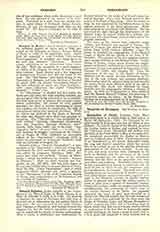

Bernardine of Feltre, BLESSED, Friar Minor and missionary, b. at Feltre, Italy, in 1439 and d. at Pavia, September 28, 1494. He belonged to the noble family of Tomitano and was the eldest of nine children. In 1456 St. James of the Marches preached the Lenten course at Padua, and inspired to enter the Franciscan order, Bernardine was clothed with the habit of the Friars Minor in May of the same year. He completed successfully his studies at Mantua and was ordained priest in 1463. Cured miraculously of an impediment in his speech, Bernardine began the long and fruitful apostolate which has caused him to be ranked as one of the greatest Franciscan missionaries of the fifteenth century. Every city of note and every province from Lombardy in the north to Sardinia and the provinces of the south became successively the scene of his missionary labors; and the fruits of his apostolate were both marvellous and enduring. Bernardine, however, will be best remembered in history in connection with the monti di pieta of which he was the reorganizer, and, in a certain sense, the founder. The word mops which literally means an accumulation of wealth or money, now called capital, seems to have been a generic term used in the fifteenth century to signify lending houses in general; and hence the montes pietatis or monti di pieta were a species of charitable lending-houses not, perhaps, unlike our modern pawnbrokers’ establishments, but possessing, of course, none of the sinister features of the latter. As originally instituted the monti di pieta were intended as a timely and effectual remedy for the evils occasioned by the usury then practiced by the Jews upon the people of Christian Italy; and Blessed Bernardine’s zeal in reorganizing them and in founding them in places where they had not previously existed affords an explanation of the fact that he is generally represented carrying in his hand a monte di pieta, that is, a little green hill composed of three mounds and on the top either a cross or a standard with the inscription: Curam illius habe. As an author Bernardine has left us little if anything of importance, but it is interesting to note that the authorship of the well-known Anima Christi has as often as not been ascribed to Blessed Bernardine of Feltre. The fact, however, that the Anima Christi was composed sometime before the birth of Blessed Bernardine disproves any claim that lie might have of being its author. As in the case of St. Ignatius, Bernardine also made frequent use of it and recommended it to his brethren. The feast of Blessed Bernardine is kept in the Order of Friars Minor on the 28th of September. (See Montes Pietatis.)
STEPHEN M. DONOVAN

